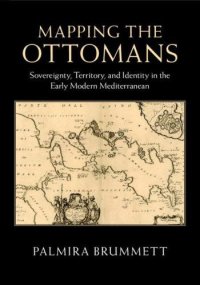
Ebook: Mapping the Ottomans: Sovereignty, Territory, and Identity in the Early Modern Mediterranean
Author: Brummett Palmira Johnson
- Tags: Cartography, Cartography--Europe--History--17th century, Cartography--Turkey--History--17th century, Christianity, Christianity and other religions--Islam--History, Interfaith relations, Islam, Islam--Relations--Christianity--History, Religion and geography, History, Cartography -- Turkey -- History -- 17th century, Cartography -- Europe -- History -- 17th century, Christianity and other religions -- Islam -- History, Islam -- Relations -- Christianity -- History, Turkey -- History -- Ottoman Empire 1288-191
- Year: 2015
- Publisher: Cambridge University Press
- City: Europe;Turkey
- Language: English
- azw3
"This book examines how the Ottomans and their empire were mapped in the narrative and visual imagination of the Christian kingdoms of early modern Europe. Simple paradigms of Muslim-Christian confrontation and the 'rise' of Europe in the seventeenth century do not suffice to explain the ways in which European mapping envisioned the "Turks" in image and narrative. Rather, maps, travel accounts, compendia of knowledge, and other texts created a picture of the Ottoman empire through a complex layering of history, ethnography, and eyewitness testimony which juxtaposed current events to classical and Biblical history; counted space in terms of peoples, routes, and fortresses; and used the land and seascapes of the map to assert ownership, declare victory, and embody the reach of imperial power. Maps here serve as centerpieces for a discussion of early modern space, time, borders, stages of travel, information flows, invocations of authority, and cross-cultural relations. The book is enriched throughout by examples of Ottoman self-mapping"--;"Simple paradigms of Muslim-Christian confrontation and the rise of Europe in the seventeenth century do not suffice to explain the ways in which European mapping envisioned the "Turks" in image and narrative. Rather, maps, travel accounts, compendia of knowledge, and other texts created a picture of the Ottoman Empire through a complex layering of history, ethnography, and eyewitness testimony, which juxtaposed current events to classical and biblical history; counted space in terms of peoples, routes, and fortresses; and used the land and seascapes of the map to assert ownership, declare victory, and embody imperial power's reach. Enriched throughout by examples of Ottoman self-mapping, this book examines how Ottomans and their empire were mapped in the narrative and visual imagination of early modern Europe's Christian kingdoms. The maps serve as centerpieces for discussions of early modern space, time, borders, stages of travel, information flows, invocations of authority, and cross-cultural relations"--;Cover; Half title; Dedication; Title; Copyright; Contents; List of Images; Acknowledgments; Note on Transliteration and Translation; Chapter 1 Introduction: Mapping Empire, and Turks on the Map; Chapter 2 Reading and Placing the Turk; Chapter 3 Borders: The Edge of Europe, the Ends of Empire, and the Redemption of Christendom; Envisioning Borders: The Ends of Empire and the Christian-Turk Divide; Mapping Transimperial Space; The Holy Land Writ Large and the Power of Prophecy; Chapter 4 Sovereign Space: The Fortress as Marker of Possession.
Download the book Mapping the Ottomans: Sovereignty, Territory, and Identity in the Early Modern Mediterranean for free or read online
Continue reading on any device:

Last viewed books
Related books
{related-news}
Comments (0)